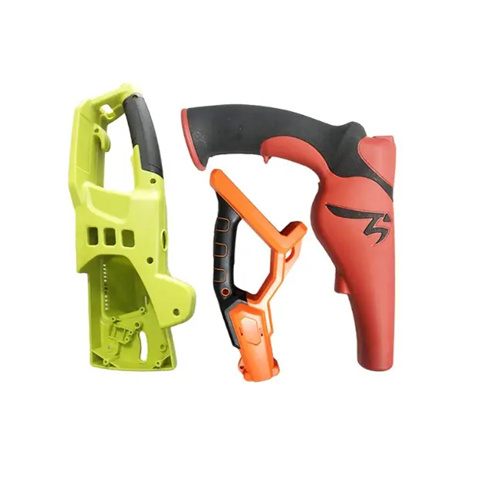Injection molding burn (carbonization)
Injection scorch (carbonization) is the appearance of black, charred spots, streaks, or areas on or within a plastic part. It’s a serious defect in injection molding, not only damaging the product’s appearance but also potentially generating toxic gases due to material degradation, impacting production safety and part performance. It’s essentially the result of thermal oxidative degradation of the plastic melt under high temperature or high pressure, breaking molecular chains and forming carbides. These carbides are commonly found in mold corners, at the bottom of deep cavities, or near gates. For example, in the production of black plastic pipes, if the cavity is poorly vented, trapped air is compressed, generating adiabatic heat rise, causing the local melt temperature to exceed the material’s decomposition temperature (e.g., PVC exceeding 180°C). This creates spotty scorch marks on the pipe’s inner wall. In severe cases, the scorch marks can reach a depth of 0.5 mm, reducing the pipe’s pressure resistance by over 50%.

The main causes of burns during injection molding can be analyzed from three perspectives: gas entrapment, excessive temperatures, and material properties. Gas entrapment is the most common contributing factor. Air, melt volatiles, or release agent volatiles in the mold cavity cannot be expelled promptly. These gases are compressed by the melt, resulting in a “adiabatic compression” phenomenon. This causes a sudden local temperature rise (for example, at a compression ratio of 10:1, the air temperature can rise from 25°C to over 300°C), sufficient to decompose most plastics. Excessive temperatures can include excessive barrel temperature settings (for example, PC barrel temperatures exceeding 320°C), excessive screw speed leading to excessive shear heating, or uncontrolled localized heating in the hot runner system, causing premature degradation of the melt within the barrel or runner. Regarding materials, heat-sensitive plastics (such as PVC and POM) are temperature-sensitive and prone to decomposition when exposed to heat for extended periods. Impurities or moisture in recycled materials can accelerate thermal oxidation reactions, increasing the risk of burns. For example, a company uses recycled PVC materials to produce pipes. Because the material contains 1% metal impurities, it causes local overheating during screw shearing, and continuous charred stripes appear on the surface of the pipe.

The key solution to burning caused by gas entrapment is to enhance the mold’s venting capacity. Adequate venting slots should be created at the final location where the melt is filled (such as cavity corners and rib ends). The depth should be determined based on the material’s fluidity: 0.02-0.03mm for plastics with good fluidity (such as PE) and 0.04-0.05mm for plastics with poor fluidity (such as PC). The slots should be at least 10mm wide and extend to the outside of the mold to ensure smooth gas evacuation. For deep-cavity parts (over 50mm deep), vent holes should be placed on the core and connected to a vacuum system to pre-emptively remove more than 80% of the air in the cavity, reducing the risk of compression temperature rise. Optimize the location and number of gates to avoid the formation of “air pockets” during melt flow. For example, on large parts, single gates should be replaced with multiple gates to disperse gas discharge across multiple areas. For example, when producing an automobile hood (120mm deep), four 8mm diameter vent holes were added to the bottom of the cavity. Combined with vacuum extraction, this increased exhaust volume by three times, completely eliminating the problem of corner burning.

Controlling temperature and shear conditions is key to preventing scorching caused by thermal degradation. Barrel temperatures should be set appropriately, following a “gradual heating” principle. Keep the front section of the barrel slightly lower than the middle section, and the middle section lower than the back section (e.g., for PP barrel temperatures: 200°C for the back section, 210°C for the middle section, and 205°C for the front section). This prevents the melt from remaining in the front section for extended periods. Reduce screw speed and back pressure to minimize shear heating. For example, for POM, reducing screw speed from 150 rpm to 100 rpm and back pressure from 10 MPa to 5 MPa will lower the melt temperature by 10-15°C. For hot runner systems, utilize zoned temperature control and regularly calibrate thermocouples to ensure temperature fluctuations within ±3°C in each zone to prevent localized overheating. Install a temperature sensor between the barrel and nozzle to monitor the melt temperature in real time. If the temperature exceeds the material’s decomposition temperature by 10°C, an automatic alarm will be issued and heating power will be reduced. For example, when producing POM gears, by reducing the barrel temperature from 210°C to 195°C and reducing the screw speed by 30%, the scorch mark defect rate in the gear inner bore was reduced from 20% to below 1%.

Optimizing materials and processes can also effectively reduce scorching. Selecting materials with higher temperature resistance, such as replacing standard PVC with heat-resistant PVC (raising the decomposition temperature from 180°C to 200°C), or adding 0.1-0.3% antioxidants (such as hindered phenols) to the material can slow thermal oxidative degradation. Strictly control the proportion of recycled materials (no more than 20%) and screen, clean, and dry the recycled materials to remove impurities and moisture (moisture content is controlled below 0.05%). Adjust the injection process, adopting a “slow-fast-slow” injection speed strategy: initially filling the area near the gate at a low speed to prevent rapid air entrainment, then rapidly filling the main body in the middle, and then slowly filling the end to facilitate air discharge. Extend the molding cycle and reduce the melt residence time in the barrel (for example, from 5 minutes to 3 minutes). Especially for heat-sensitive materials, ensure a “first-in, first-out” (FIFO) approach to prevent old material from accumulating and degrading. For example, when producing PVC profiles, adding 0.2% of antioxidant 1010 and controlling the melt residence time in the barrel to less than 2 minutes completely solves the problem of burnt spots on the surface of the profiles.
